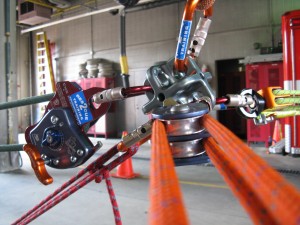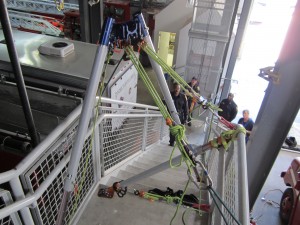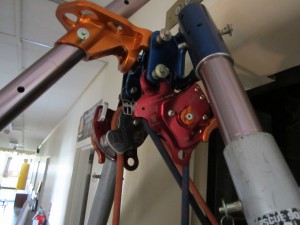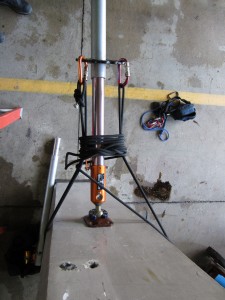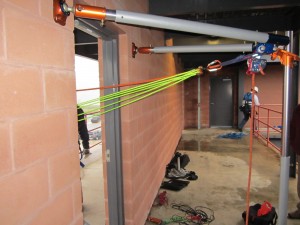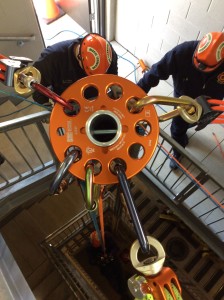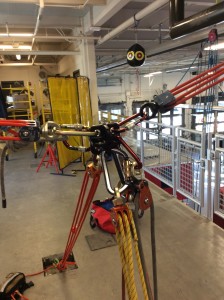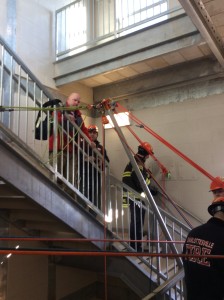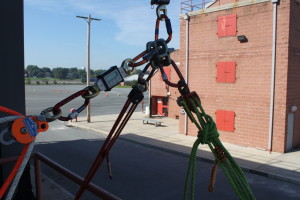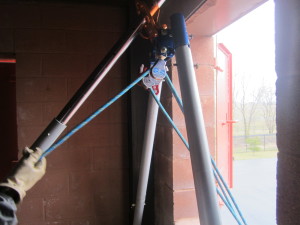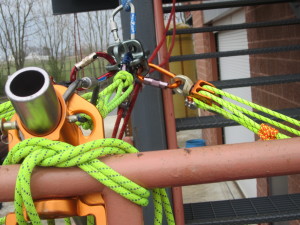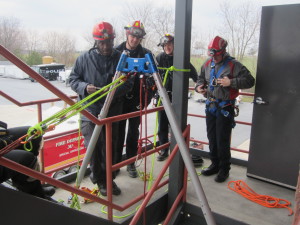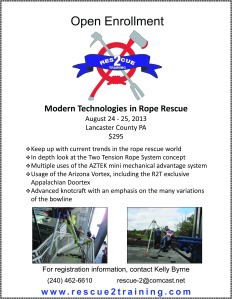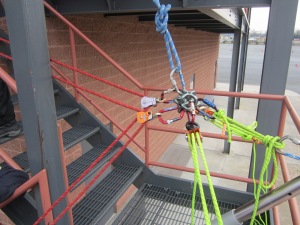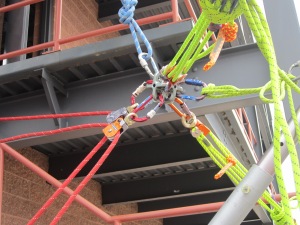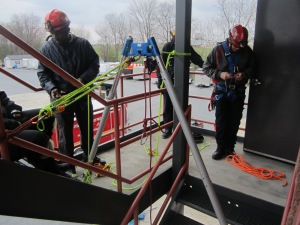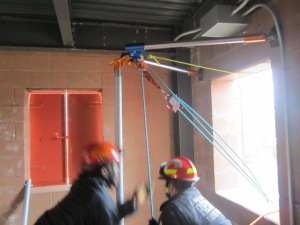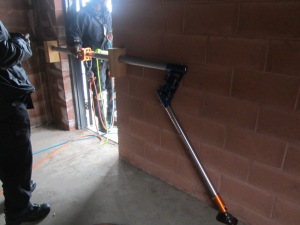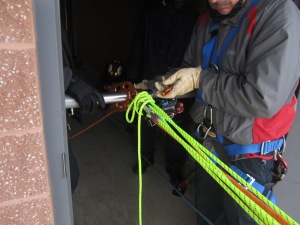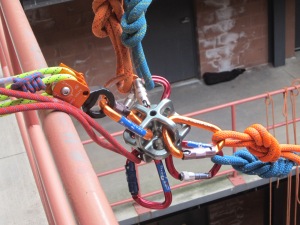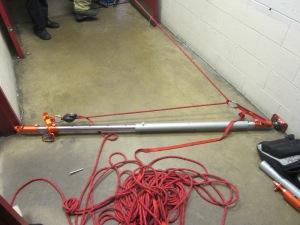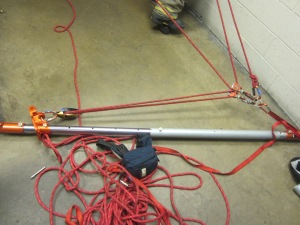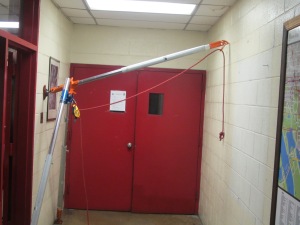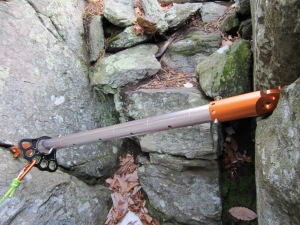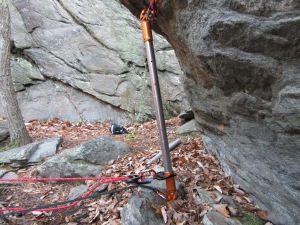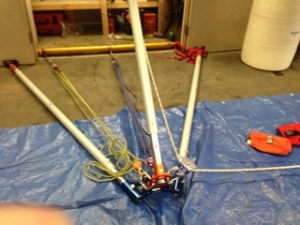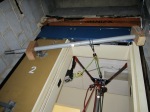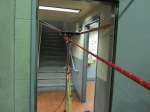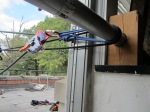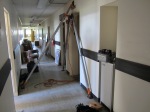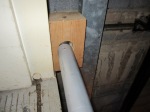Thank you to everybody for all of the interest! After filling up all of the spots in our first class in record time, we opened up a second class right after the first one. That class has now filled, too! Keep an eye out on the website for our upcoming classes. We will most likely have the next one in March. You can sign up for our mailing list in the column on the righthand side of the web page.
After many months and many requests, we are once again offering open enrollment for our popular Modern Technologies in Rope Rescue class. Come join us in Lancaster, PA on Oct 17 and 18 to learn how much more efficient your rescues can be with a few pieces of modern gear and a whole lot of practical applications learned from real world experiences. Here is your chance to keep up on the latest equipment and trends in the rope rescue world.
After filling up the Oct 17, 18 class in record 5 days (!!!) we have decided to run a second class the following 2 days. The registration is currently open for the Oct 19, 20 class. The link at the bottom of this page will register you for the second class.
Topics this time around include:
Use of the AZTEK kit to pass knots, perform a pickoff, basket attending, and a whole lot more.
In depth discussion and use of the Two Tension Rope System utilizing the MPD.
Use of the Arizona Vortex high directional in the urban environment.
The Rescue 2 Training original: The Appalachian Doortex! For urban anchoring and elevator rescue. High Directional? Anchor? Both!?… Come find out!
3 dimensional anchoring with the UFO.
The Skyhook capstan winch.
…And much more.
The cost of this two day, 16 hour class is $295 per person. Just bring a harness, helmet, and any ideas or equipment you would like to see used.
Please contact Kelly Byrne at 240-462-6610 or kelly@rescue2training.com with any questions.

